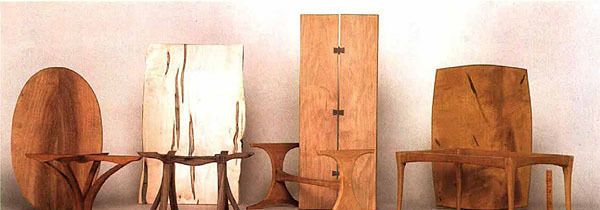Making Dining Tables That Work
Careful measuring and common sense ensure stability, comfort and good looks
Synopsis: When Peter Tischler builds a dining table, he starts by finding out how the owner likes to dine and where the table is going. He makes rough sketches and scale models, to convey material and proportions, and then he starts measuring. He measures people, rooms, rugs, other furniture, and china, so that the finished piece fits right. Tischler advises that design is a compromise, and he offers tips on balancing needs. He discusses the importance of his methods – the measuring, the models, and the scale drawings and materials. Then he offers information on additional reading.
Make furniture that people can be comfortable living with.” So said Sam Maloof, the noted chairmaker, and this same guiding principle is at the heart of the furniture I build. Optimum comfort certainly applies to chairs, and the same holds true for dining tables. When building a dining table, I start by finding out how the owner likes to dine and where the table is going. I use this information to come up with rough sketches and scale models, which convey material and proportions better than drawings. Then I measure everything—people, dining room, rugs, existing furniture and china—so I can translate dimensions to drawings and occasional mock-ups. This multi-step process almost always leads to a table that best suits the customer.
Design is always a compromise
How a dining table relates to its users is just as important as how it relates to its surroundings. The best tables are the ones that make tiny compromises. For example, when building a table for a family with children, the durability of the finish on the tabletop outweighs the need of the finish to be authentic to the table’s style period. Fortunately, there are some simple guidelines that will help with design decisions.
Seating—The first step is to determine the number of people to be seated, so you can figure the table size that will fit them comfortably. If the owner entertains regularly, you’ll want to make a table with an expanding top that doesn’t require a complicated leaf system or a forest of legs. I consult a number of references (see the further reading box on p. 63) to get ideas for seating needs. They are only a starting point, though. General rules (for example, the commonly given 24 in. of elbow room per person) may have to be increased or decreased to take into account the type of table, the space needed for the chairs or how else the table might be used. Figure 1 on p. 62 shows a typical table plan for seating six people.
Basic dining dimensions—I’ve found that the most comfortable height of a dining table is between 28 in. and 28 in., which is a bit lower than what the textbooks say. But for a family, that height is more informal and makes the sitters feel relaxed. The height, of course, depends on the chairs and whether the table has an apron that will limit leg clearance (see figure 2 on p. 63)
From Fine Woodworking #110
For the full article, download the PDF below:
Fine Woodworking Recommended Products

Circle Guide

Stanley Powerlock 16-ft. tape measure

Drafting Tools






















Log in or create an account to post a comment.
Sign up Log in